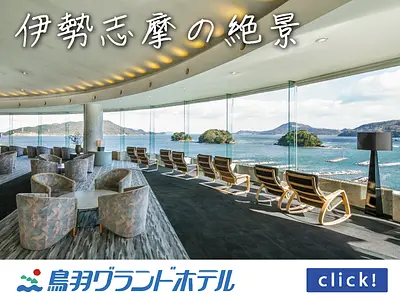Matsusaka also has delicious tea. Masashi Asada, a photographer from Mie Prefecture, tastes authentic tea at "Shinryoku Sabo" in Iinan!
掲載日:2021.12.15
MatsusakaCity is the largest tea producing region in the Nansei region of Mie Prefecture. In the Iinan and Iidaka areas of MatsusakaCity, a high-quality deep-steamed sencha called ``Matsusaka Tea'' is produced. This time, photographer Masashi Asada visits ``Shinryoku Sabo'', a tea farmer and Japanese tea cafe, and interviews them about the appeal of Matsusaka tea.
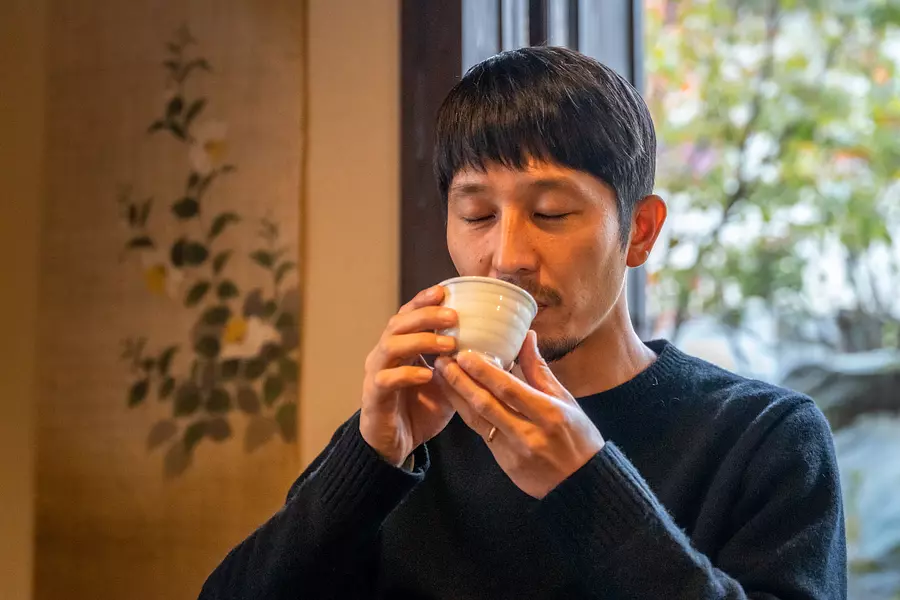
"Matsusaka tea" is the name (nickname) for deep-steamed sencha produced in Matsusaka. It is also called "Ise GreenTea" throughout Mie Prefecture, and in a public contest in 2010, the name "Matsusaka tea" was chosen so that Matsusaka would be associated with tea. Mie Prefecture is the third largest tea producing area in Japan in terms of tea cultivation area and production volume, and the Iinan and Iitaka areas of MatsusakaCity are the largest tea producing area in the Nansei area of Mie Prefecture. This time, Masashi Asada, a photographer from Mie Prefecture, will be interviewing Daisuke Matsukura, the third generation owner of Shinryoku Sabo, a tea farmer and Japanese tea cafe in Iinan, which is surrounded by rich nature!
There is also a photo taken by Masashi Asada in the article. CHECK!
Click here for the profile of Masashi Asada, who is also the original creator of the movie “Asada Family!”
■Table of contents
- 1. About Shinryoku Sabo, which produces and sells Matsusaka tea
- 2. Characteristics of Matsusaka tea
- 3. Shinryoku Sabo’s thoughts on tea production
- 4. Photo taken by Masashi Asada
1. About Shinryoku Sabo, which produces and sells Matsusaka tea
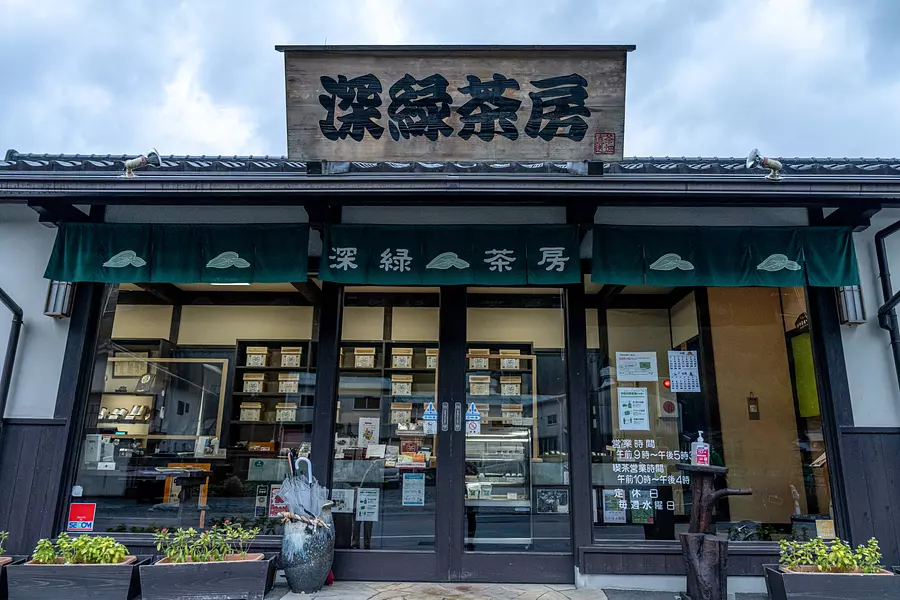
Shinryoku Sabo is an agricultural production corporation established by three tea farmers with the goal of protecting the tea industry and local nature. Since its establishment in 1999, it has been awarded the Minister of Agriculture, Forestry and Fisheries Award "Emperor's Cup", which is considered the highest honor in Japan's agriculture, forestry and fisheries industry, and "Senju" produced by IseShimaSummit and many other wonderful achievements.
Mr. Matsukura, the representative, decided to establish Shinryoku Sabo due to the slump in tea prices, the decline in demand for tea, and the aging of the machinery owned by local tea farmers. If this continues, Iinan's tea industry itself may decline, so three farmers established an agricultural production corporation. Although Mie Prefecture ranks third in the country in terms of tea production, its tea plantation area and production are far inferior to Shizuoka and Kagoshima, which rank first and second in the country. For this reason, it is sometimes said that ``even if tea production in Mie Prefecture were to disappear, there would be no effect on consumption nationwide.'' However, since the taste of tea differs depending on the region of production, it is said that ``If the taste of tea from Mie and Matsusaka disappears, We continue to produce products with the belief that there will always be people who find it difficult.
2. Characteristics of Matsusaka tea
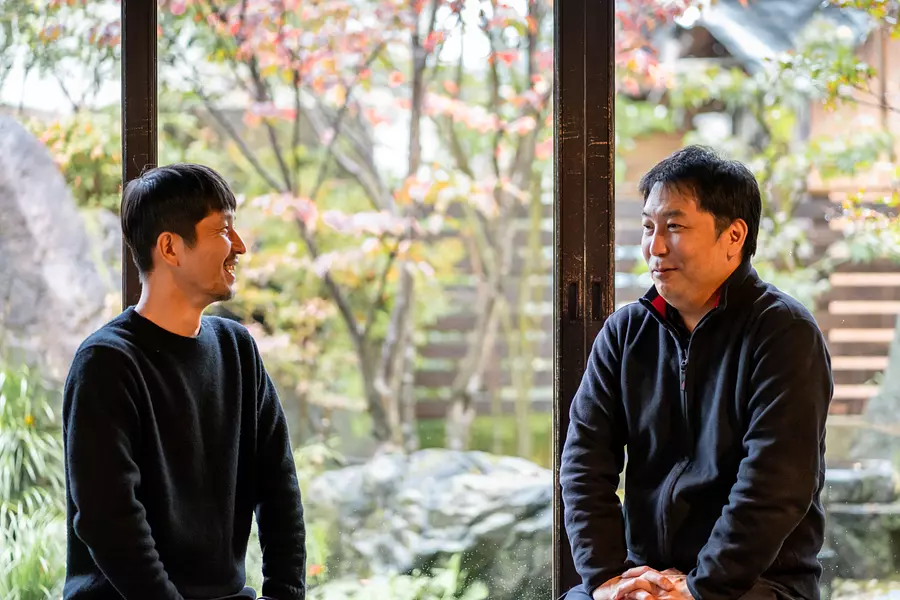
Masashi Asada: What are the characteristics of Matsusaka's deep steamed sencha?
Mr. Matsukura, Representative: The Iinan area MatsusakaCity is close to the mountains, so there is a difference in temperature, which increases the depth of the tea's flavor. When you drink it, you can feel the strength of the punch. Additionally, there is a river running near the tea plantations, which casts fog over the tea fields in the morning and at night, which is said to be effective in improving the taste of the tea.
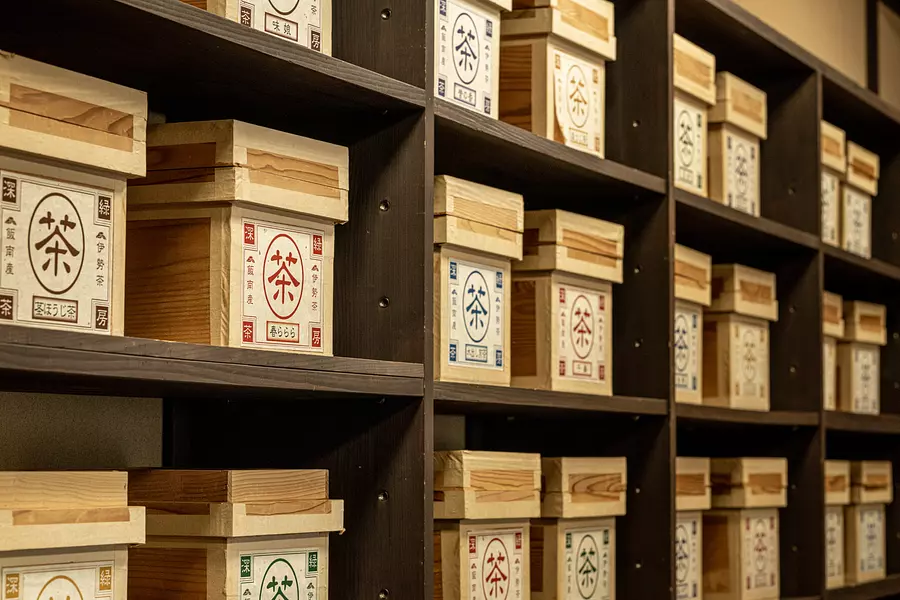
Deep Green Tea Shop sells many types of tea, and even deep steamed sencha has a variety of flavors. At the Japanese tea cafe, you can drink ``Chaju'' (800 yen including tax), which allows you to enjoy the natural flavor and richness of tea, and ``Senju'' (500 yen including tax), which has a relaxing sweetness, and has a refreshing astringency followed by umami. ``Dark Green'' (480 yen including tax), etc. You can also order handmade Japanese sweets, parfaits, anmitsu, etc. to go with your tea. There are so many types of tea and sweets that you'll be spoiled for choice!
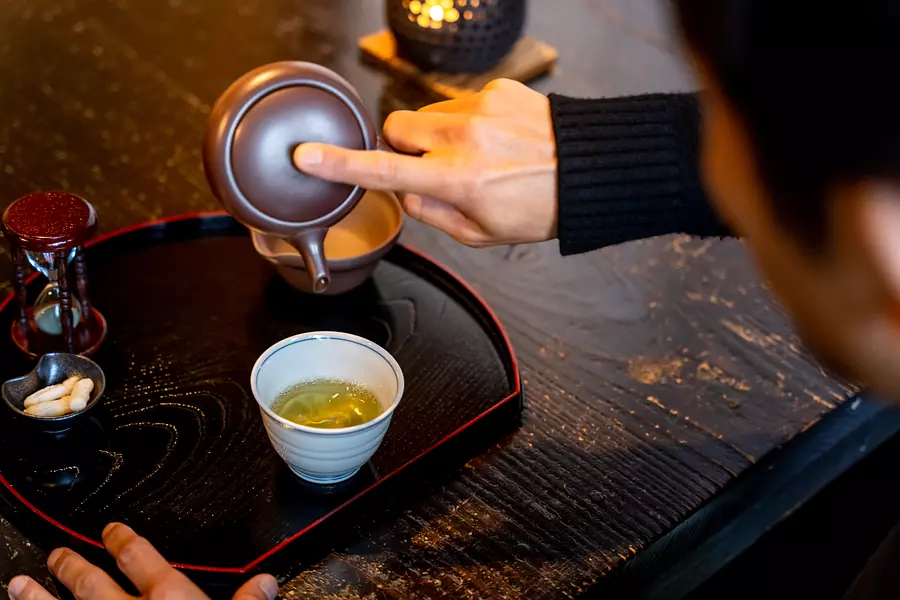
This time, Mr. Asada ordered "Senju" (500 yen including tax). At Shinryoku Sabo's Japanese tea cafe, you can learn how to brew delicious tea from the staff and then brew your own tea. You can learn how to brew tea that matches the tea leaves you ordered, so you can also purchase the same tea leaves and practice at home.
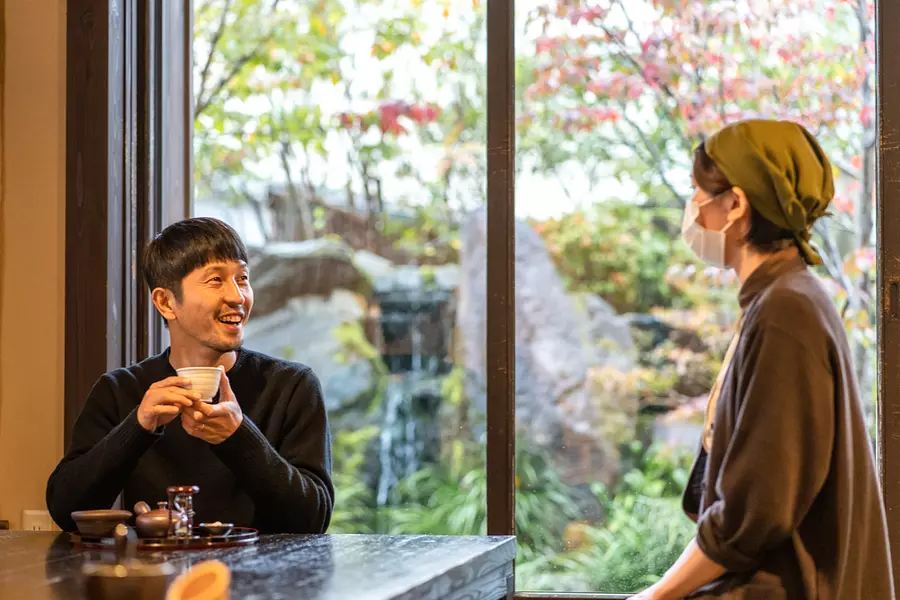
In addition, you can enjoy tea not only after brewing it once, but also after the second or third brew. Masashi Asada enjoys the changing taste of tea each time he brews it.
Masashi Asada Even with the same tea leaves, the first brew has a surprising umami flavor. The second brew is closer to the taste of tea you drink at home, and you may be more familiar with it. It's interesting how the taste changes depending on how many times you brew it.
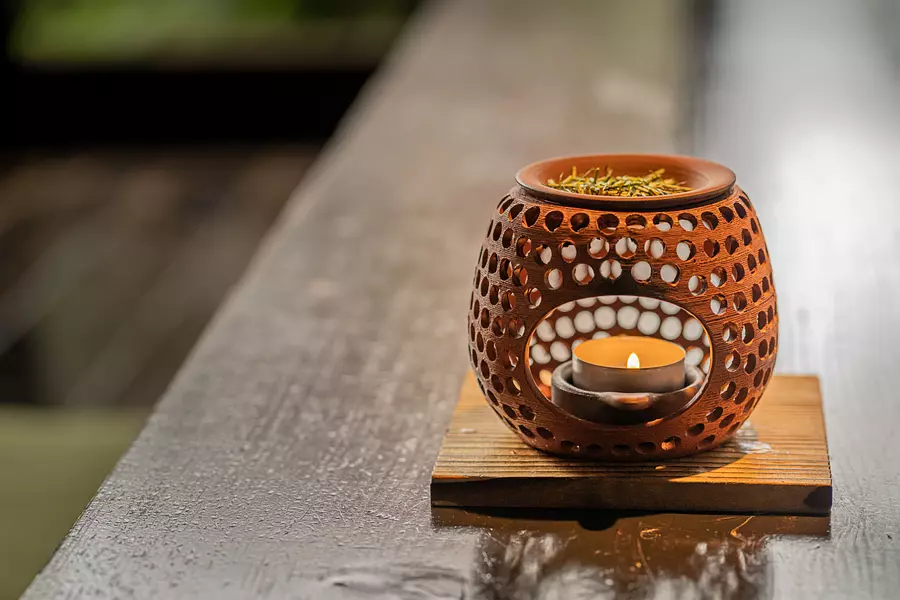
While waiting for your tea to be brewed, we recommend enjoying the scent of the tea incense burner. A tea incense burner is an incense burner that heats the tea leaves placed on top to enjoy the aroma. "The scent of tea is relaxing. I want to have it on my work desk," said Masashi Asada, who seemed soothed by the scent.
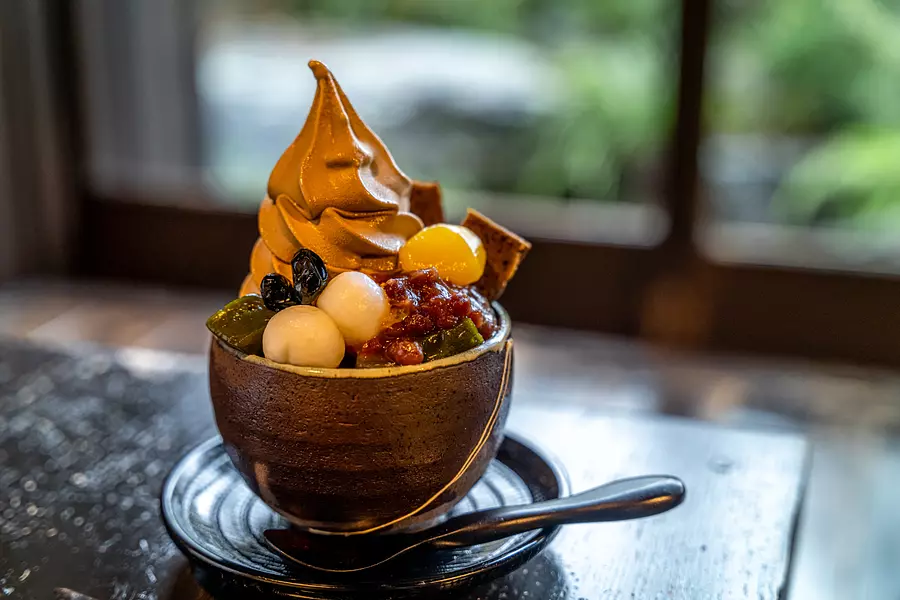
To go with the tea, we also had the Japanese Nagomi Parfait (850 yen including tax). The parfait uses plenty of tea made by Shinryoku Sabo. The photo is of a roasted green tea parfait that is sold seasonally in October and November. Apparently they sell green tea parfaits in months other than October and November. Both hojicha and green tea look delicious!
*Green tea parfait will not be sold in October and November.
Masashi Asada's soft serve, chestnuts, red beans, shiratama balls...it's a very luxurious parfait with lots of ingredients. It smells nice and feels satisfying!
3. Shinryoku Sabo’s thoughts on tea production
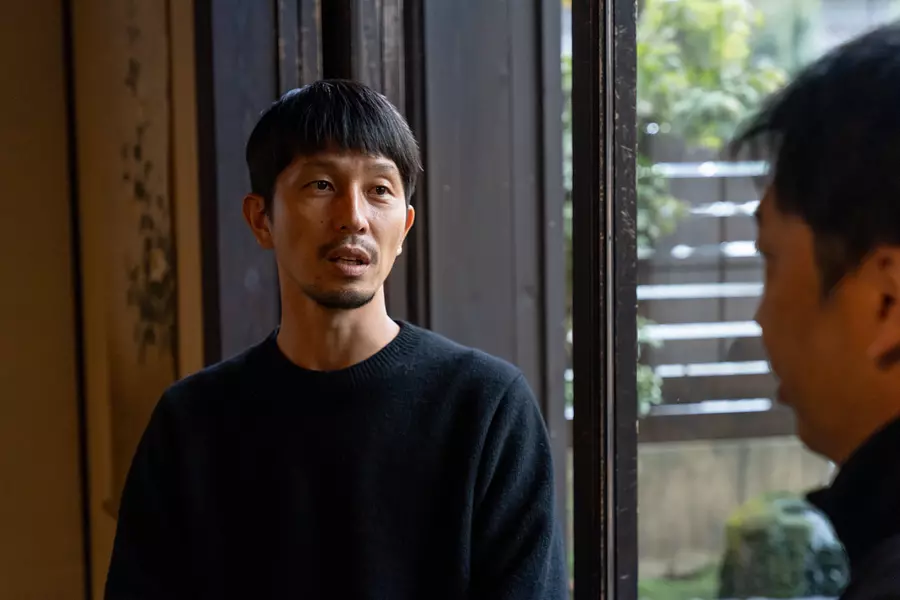
I was curious about Masashi Asada's menu, which said "Shota's tea"...
This tea is made by entrusting one of the tea plantations to an employee named Sanshota Matsukura, the company's representative. When making tea, there is a tendency to lean toward ``rationalization,'' but I want people to not only think about that, but also to be particular about how they want to make tea, and get involved in making tea. In the future, as we increase the number of employees involved in tea production, we plan to increase the number of tea plantations we entrust to.
Masashi Asada is wonderful.
Representative Matsukura-san: We want to preserve the tea of this region as much as possible within the current area. To achieve this, it is necessary to develop human resources. I am always thinking about how to get young people interested in tea making. I would like to not only protect the tea production itself, but also increase the number of people who drink Matsusaka tea, and promote Matsusaka tea to people who don't know about it. Therefore, if there is a request from a nursery school or elementary school, we offer tea picking experiences and tea making experiences at our factory, taking safety into account. In addition, we received a proposal from Iinami High School and offered them the space for their Japanese tea cafe when they were making latte art using Matsusaka tea.
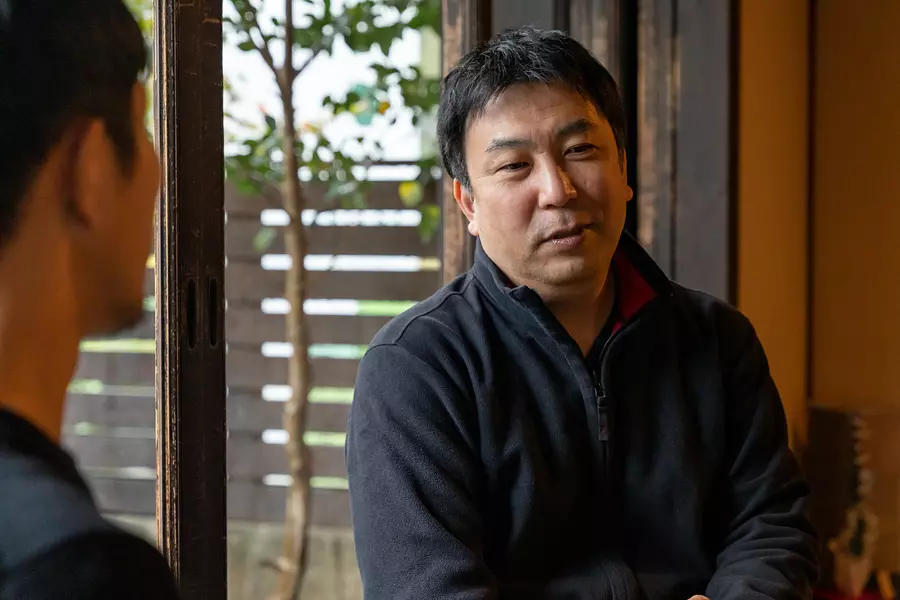
CEO Matsukura and I believe that in order to protect tea farmers, we need to change the culture of ``giving green tea for free.'' I'm sure there are many restaurants that serve green tea for free, but you'll be giving away the green tea you purchase for free. In fact, I have even been approached by a restaurant asking if there is a way to charge a fee. At that time, I advised that instead of simply charging a fee, it would be a good idea to add value through brewing methods, etc.
Mr. Masashi Asada, you have a strong passion for making tea and promoting tea.
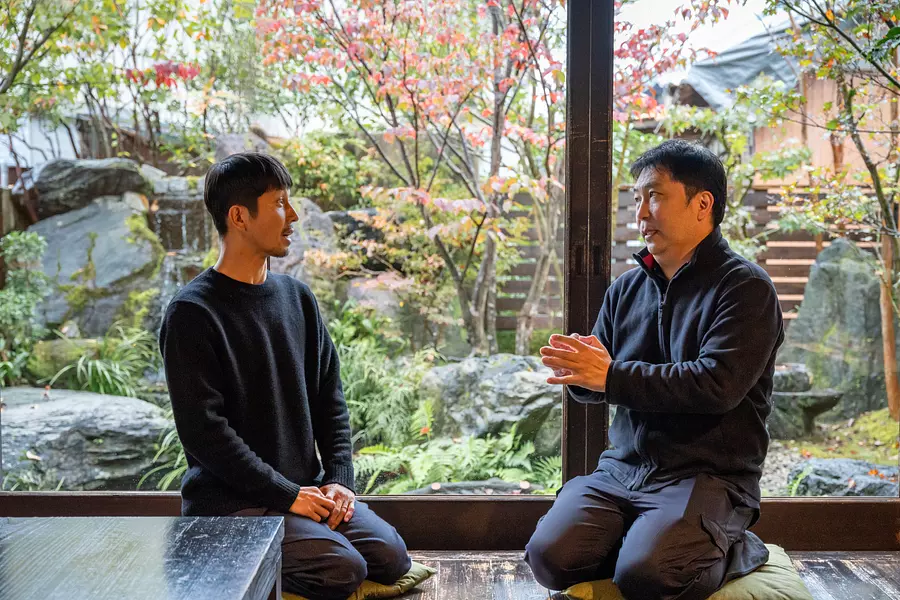
Representative Matsukura-san: Matsusaka, the Iinan region, and Matsusaka tea are full of charm, and I personally want to cherish them. I love the rural feel of Iinami, where I was born and raised. I've been walking with my wife recently, and the air is clear and feels good. Although Iinami is a rural area, there is even a high school within the area, so it is an attractive place to raise children. Moreover, Matsusaka is proud of its delicious food no matter where you eat it, and of course I love Matsusaka tea. In fact, it's a taste that I've been accustomed to since I was born, so it might be more accurate to say that it feels right at home. Local tea appeals to your DNA. We are happy when customers come to enjoy Matsusaka tea and come to Dark Green Tea House to drink it.
4. Photo taken by Masashi Asada
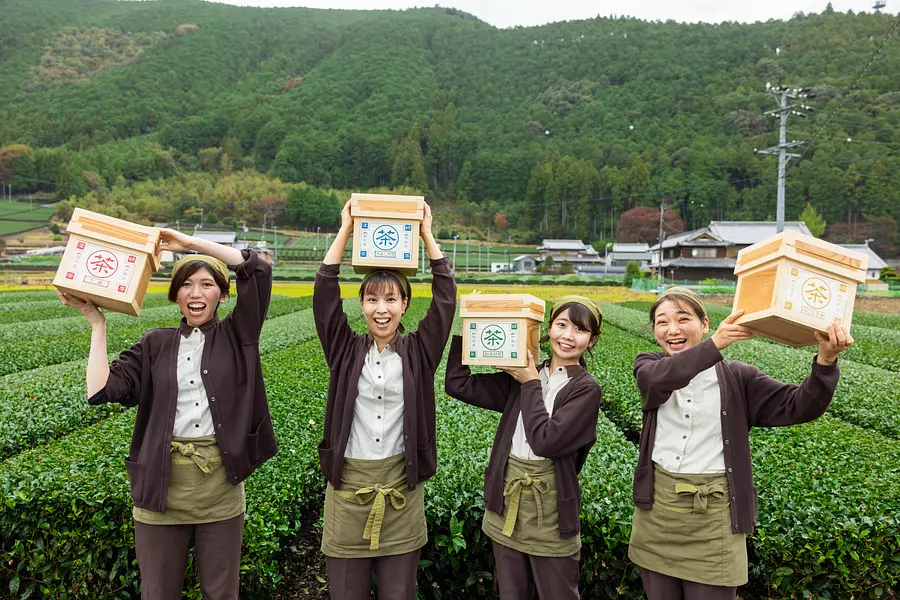
I took a photo of the staff of Dark Green Tea House with a beautiful green tea plantation in the background. Your smile is refreshing!
dark green tea room
0598-32-5588
Iinan main store 9:00-17:30
Japanese tea cafe 10:00-16:00
Every Wednesday
Year-end and New Year holidays 12/31-1/3
From Ise Expressway Matsusaka IC, take National Route 166 towards Iinan for about 25 minutes.
Article production: MSLP
| Category | |
|---|---|
| season | |
| area |



